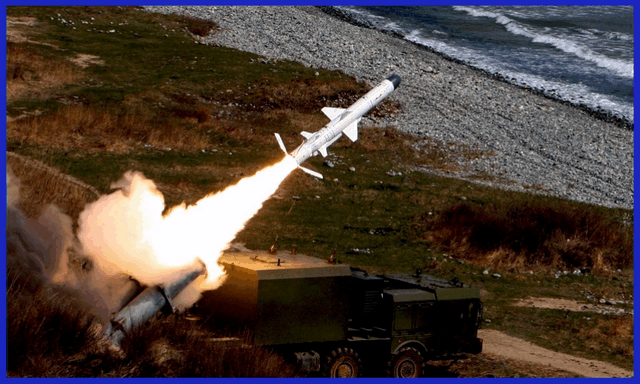Embarking on a journey through the annals of military ingenuity, Let’s Delve Into The Details Of The Kh-35 Kayak Missile, an Exemplary Creation from the Soviet Era, a Vigorous Turbojet-Powered and Formidable Anti-Ship Cruise Missile, Still Under Active Development by Russia. This Mighty Missile Can Be Launched with Utmost Precision from Aircraft, Helicopters, Surface Ships, and Coastal Defense Batteries, facilitated by a Rocket Booster. Specifically Designed to Engage and Dominate Surface Vessels in Littoral Environments, the Kh-35 Booasts an Impeccable Active Radar Homing Guidance System, a Robust Solid-Fuel Rocket Motor, and an Expansive High-Explosive Warhead.
The Kh-35 can be regarded as the worthy successor to the SS-N-2 Styx missile, heralding a new era of compact and advanced weaponry. While being smaller in size, this modern marvel surpasses legacy missile systems with its impressive range of capabilities. Furthermore, it sets itself apart from other contemporary anti-ship missiles such as Kalibr or Oniks by offering an economical alternative. With an estimated cost of $500,000 USD per missile, the Kh-35 proves that exceptional performance need not come at an exorbitant price.
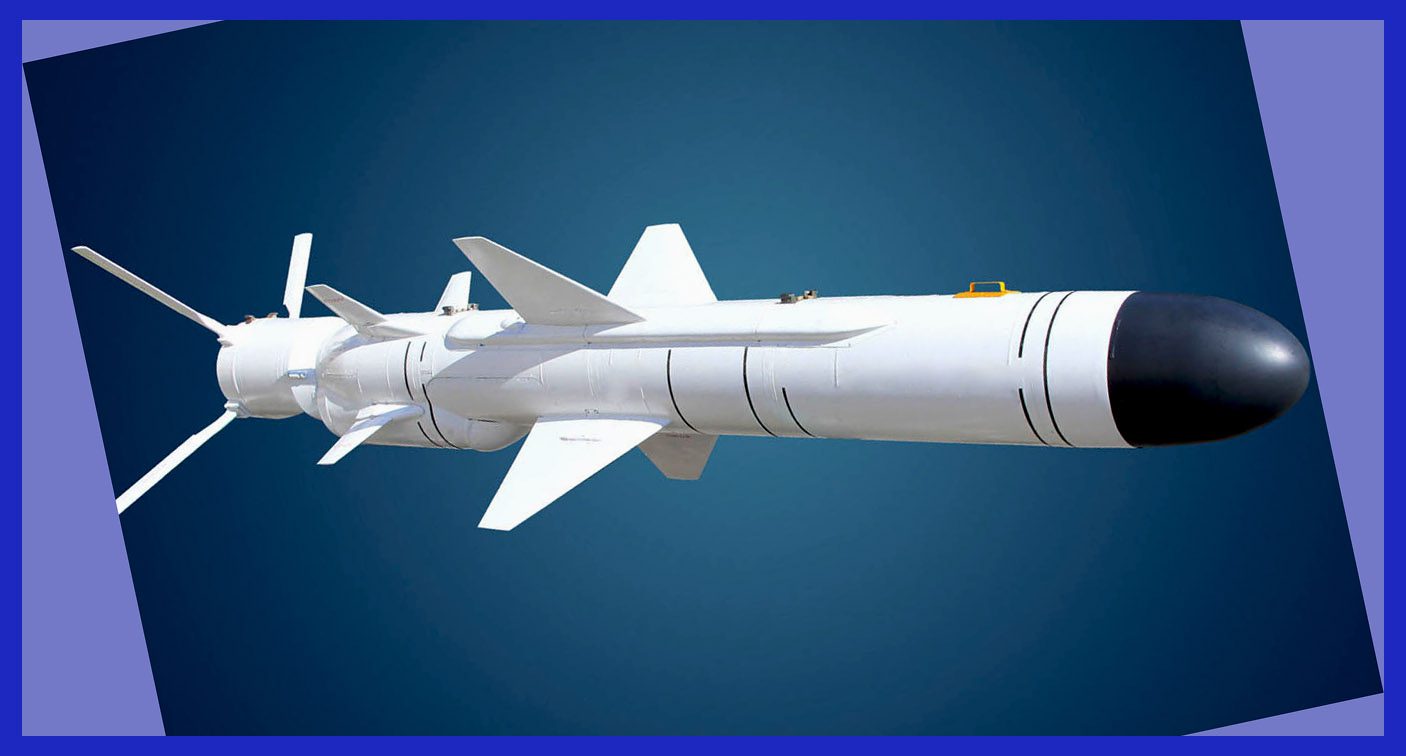
Analyzing The Design Of The Kh-35 Kayak Anti-Ship Missile ( ASM )
The design of the Kh-35 Kayak anti-ship missile reflects a number of key considerations to ensure its effectiveness in engaging surface vessels. Here are some aspects of its design worth analyzing
Aerodynamic Configuration: The Kh-35 exhibits a sleek and compact design, characterized by a cylindrical body and a gracefully curved nose cone. This meticulously engineered aerodynamic configuration plays a pivotal role in minimizing air resistance, resulting in enhanced speed and extended range for the missile. As a subsonic weapon, the Kh-35 adheres to a conventional aerodynamic configuration, featuring cruciform wings, fins, and a partially submerged air duct intake. Propelling the missile is a turbofan engine, ensuring optimal performance and efficiency. During the final stage of its trajectory, the missile relies on guidance received from commands transmitted by the active radar homing head and the radio altimeter, thereby enabling precise targeting of its intended destination.
Guidance System: The Kh-35 incorporates an advanced guidance system that enhances its target acquisition capabilities. Its ARGS-35E active radar seeker operates in both single and multiple missile launch modes, enabling effective acquisition and target locking within a maximum range of 20 kilometres. Notably, the existing ARGS-35E X band seeker is being replaced by a newly developed radar seeker known as Gran-KE, engineered by SPE Radar MMS. The Kh-35’s active radar homing guidance system assumes a pivotal role in its design, offering a plethora of advantages. This sophisticated system enables the missile to autonomously detect and track its intended target by utilizing radar signals, ensuring precise and reliable target acquisition.
This autonomy grants the missile the capability to operate independently, allowing the launching platform to allocate resources to other tasks. Target designation data can be seamlessly inputted into the missile from various sources, including the launch aircraft, ship, or external systems. Upon insertion of flight mission data, the missile’s control system, supported by an inertial system, assumes command, directing the missile during flight, stabilizing it at the designated altitude, and guiding it toward the target location. As the missile approaches the predetermined range to the target, the homing head activates, initiating a comprehensive search, lock-on, and tracking sequence of the intended objective.
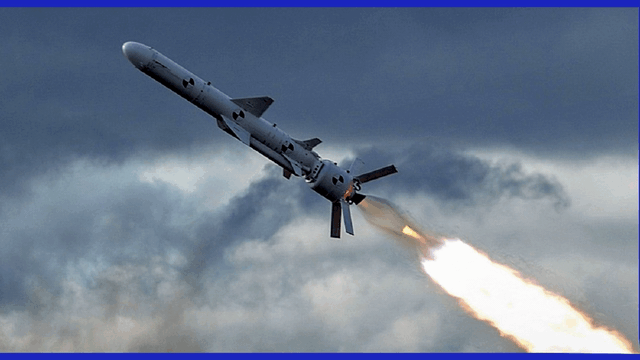
Propulsion System: The Kh-35 incorporates an efficient solid-fuel rocket motor, offering exceptional thrust and acceleration capabilities. This powerful propulsion system empowers the missile to achieve impressive speeds of up to Mach 0.8, ensuring swift engagement of targets while minimizing the risk of interception. Upon activation, the inertial control system takes command, directing the missile towards the designated target and adjusting its flight altitude to a remarkably low level. Operating at this altitude, the missile seamlessly integrates data received from the homing head and the inertial control system, thereby sustaining the homing process until a successful strike is achieved.
Partial Stealth Features: The Kh-35 incorporates purposeful stealth characteristics to diminish its radar cross-section, thereby enhancing its survivability during operations. These integrated features effectively minimize the risk of detection by enemy radar systems, thereby significantly increasing the probability of a successful engagement. The missile’s versatility allows it to be deployed under various conditions, including fair and adverse weather scenarios, in sea states ranging from 5 to 6. Furthermore, it can operate seamlessly during both day and night missions, even in the face of enemy fire and electronic countermeasures.
The Kh-35’s aerodynamic configuration is meticulously optimized for high subsonic-speed sea-skimming flight, ensuring the missile maintains its stealthy attributes. With its compact dimensions, adept sea-skimming capability, and specialized guidance algorithm, the missile maintains low signatures and enables highly secure operational modes for its active radar seeker.
Range and Lethality: The Kh-35 possesses an impressive operational range of approximately 300 kilometres, a testament to its upgraded capabilities. This extended range enables the missile to effectively engage targets located beyond the line-of-sight of the launching platform, expanding its operational reach while minimizing potential risks to the launching platform itself. The synergy of speed, range, and warhead lethality renders the Kh-35 a formidable anti-ship weapon, embodying potent offensive capabilities.
Warhead: The Kh-35 incorporates a purpose-built high-explosive fragmentation-shaped charge warhead, with an approximate weight of 145 kilograms. Carefully engineered, this warhead is specifically designed to deliver substantial destructive force upon impact, effectively incapacitating or disabling enemy surface vessels. The strategic integration of fragmentation elements within the warhead amplifies its capacity to induce widespread devastation, bolstering the missile’s formidable offensive capabilities.
Development Of The Kh-35 Kayak ASM
The development of the Kh-35 Kayak anti-ship missile can be traced back to the late 1980s in the Soviet Union
Origins: The Kh-35 project emerged as a direct response to the imperative of replacing ageing Soviet-era anti-ship missiles, namely the SS-N-2 Styx and SS-N-22 Sunburn. The objective was to develop a highly capable missile specifically designed to effectively engage surface vessels in littoral environments. While the preceding anti-ship missiles produced in the USSR boasted impressive capabilities, they were characterized by their large size and high cost. Recognizing the need for a smaller, more cost-effective solution, the Soviet Navy sought to create a diminutive yet formidable missile.
This new system, initially named 3M24 Uran ( designated SS-N-25 in Western terminology ), was primarily intended for deployment on small surface combatants such as frigates like the Krivak, Gepard, and Neustrashimy. Serving as a counterpart to Western missiles such as the US Harpoon, the 3M24 Uran, informally dubbed “Harpoonski,” bore striking similarities in appearance and functionality to its American counterpart. This innovative missile system was envisioned as a compact, affordable, and easily deployable solution across a range of platforms.

Design and Prototyping: The responsibility for the design and development of the Kh-35 missile rests with the Tactical Missiles Corporation ( KTRV ). This involved extensive research and development efforts aimed at refining the missile’s design and enhancing its capabilities. To ensure its effectiveness, prototypes were meticulously manufactured and subjected to rigorous testing and evaluation.
The initial stages of development took place within the Zvezda-Strela State Scientific-Industrial Center ( GNPTs ) group, with sources varying on whether it began in 1972 or 1977. Subsequently, Zvezda received official authorization to commence work on the Kh-35 in 1983-1984, following a decree issued by the USSR Council of Ministers and the USSR CPSU Central Committee. The ultimate objective was to equip ships of medium tonnage with this advanced missile system.
Testing and Evaluation: A comprehensive series of rigorous tests were conducted to verify the performance and operational capabilities of the Kh-35 missile. These assessments encompassed diverse phases, including ground-based trials, captive flight tests, and live-fire exercises, with the objective of evaluating its flight characteristics, guidance system, warhead effectiveness, and overall reliability. Test launches were initiated in 1985; however, encountered challenges and failures arose concerning the miniaturized active radar system.
While the missile was initially showcased in 1992 with an indication of being solely intended for export, it had not yet entered production. In 1994, India placed an order for Uran missiles, the export variant of the Kh-35E. Subsequently, this development prompted the complete realization of the missile and deliveries commenced to the Indian Navy in 1996.
Introduction to Russian Service: After a series of successful tests and thorough evaluation, the Kh-35 Kayak missile was officially incorporated into the arsenal of the Russian armed forces in the early 2000s. This integration involved its deployment on various platforms, including surface ships, submarines, and aircraft, bolstering their anti-ship capabilities. Russia formally adopted the missile for use on ships in 2003 and on the Bal coastal defence system in 2004. The air-launched variant, originally designed for Indian Il-38SD patrol aircraft, reached completion in 2005 and was subsequently deployed on aircraft within the Russian Federation.
In comparison to its predecessor, the SS-N-2 Styx missile, the Kh-35 serves as a smaller and more technologically advanced successor. It offers a significantly greater range than legacy missile systems and proves to be more cost-effective than contemporary anti-ship missiles such as Kalibr or Oniks, with an estimated price of approximately $500,000 USD per missile.
Variants Of The Kh-35 Kayak ASM
The Kh-35 Kayak anti-ship missile has undergone several variants and upgrades to enhance its capabilities and adapt it to different operational requirements. Here are some notable variants of the Kh-35
- Kh-35 (3M24): This variant of the Kh-35 missile was initially introduced into the Russian naval service in the early 2003s. It is specifically designed for base naval operations and incorporates essential features such as an active radar homing guidance system, a reliable solid-fuel rocket motor, and a potent high-explosive fragmentation warhead.
- Kh-35U: This variant of the Kh-35 missile serves as a base upgrade unified missile, capable of being deployed with various carriers. It has been in production for Russia since July 1, 2015. In addition to its anti-ship capabilities, the Kh-35U possesses the added capability of striking land targets. Notably, this upgraded version offers an improved range and enhanced guidance capabilities. It boasts an extended operational range of up to 260 kilometres ( 161 miles ) and exhibits enhanced resistance to electronic countermeasures.
- Kh-35E and Kh-35UE: The Kh-35E serves as the export version of the Kh-35 missile, tailored to ensure compatibility with international platforms. It incorporates necessary modifications to meet the specific requirements of foreign customers, enhancing its versatility and adaptability for global deployment.On the other hand, the Kh-35UE represents the export variant of the Kh-35U missile. It incorporates a combined guidance system that utilizes an inertial system, satellite navigation, and an active-passive radar seeker. This advanced guidance system provides the Kh-35UE with improved accuracy, higher jamming immunity, and the ability to engage a wider range of targets, even in an ECM environment. The new seeker boasts a lock-on range of 50 km, a significant increase compared to the Kh-35E’s range of 20 km. By combining the extended operating range of the Kh-35U with the necessary adaptability for international customers, the Kh-35UE serves as a highly capable anti-ship missile option for export, effectively meeting the diverse maritime defence requirements of foreign nations.
- Uran-E: The Uran-E represents a naval-based adaptation of the Kh-35 missile system. It incorporates shipborne equipment that integrates seamlessly with the control system, allowing for the effective deployment of the Kh-35/Kh-35E missiles. Specifically designed for small- and medium-sized naval vessels, such as fast attack craft and patrol boats, the Uran-E system offers enhanced maritime capabilities. Typically, the system comprises multiple missile launchers and associated equipment, providing a comprehensive and versatile solution for naval operations.
It is worth emphasizing that the nomenclature and specific attributes of the Kh-35 variants may differ across sources, countries, or organizations utilizing them. These variants exemplify notable adaptations and enhancements of the Kh-35 Kayak missile, enabling its deployment from diverse platforms and catering to a range of operational requirements. It is crucial to acknowledge this variability when referring to the Kh-35 variants and to consider the context in which they are discussed. Currently, eight countries are operating this system, including Russia and Ukraine. However, it is important to note that Ukraine employs a variant of the system called Neptune.
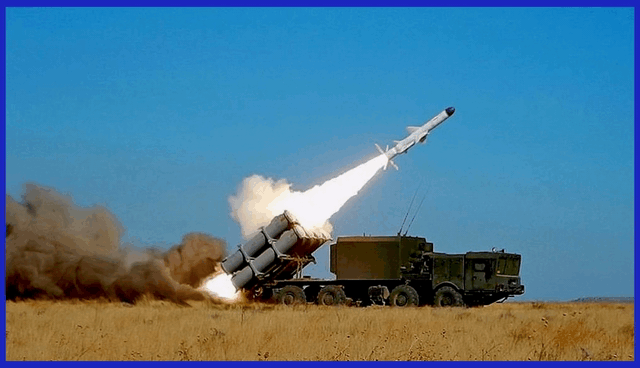
The Technical Specifications Of The Kh-35 Kayak
- Weight: 520 kg ( 1,150 lb ) Air launched version and 610 kg ( 1,340 lb ) Surface version
- Length: 12.66 ft, Air launched version and 14.41 ft, Surface version
- Diameter: 16.5 inches
- Wingspan: 52.4 inches
- Warhead: High-Explosive (HE) fragmentation-shaped charge warhead
- Detonation: Explosive impact upon detonation
- Engine: R95TP-300 Turbofan engine
- Range: Upto 300 km, with upgraded versions
- Speed: Subsonic speed of Mach 0.85, ( 1,041 km per hour )
- Guidance: Inertial guidance system with Active radar homing
- Launch Platform: All operational Russian Fighter aircraft which include the: Tu-142 (bomber), Su-57, Su-30MKI, Su-34, Su-35, MiG-29K, Su-24M, and combat helicopters such as the Ka-27, Ka-28 and Ka-52 as well as ships, boats, coastal, LACM (Land Attack Cruise Missile), TEL (Transporter-Erector Launcher) variants.
Moreover, do not miss the exclusive opportunity to acquire an exquisite, large-scale 1/72 premium diecast model of the formidable Su-57, Su-30MKI, Su-34, and MiG-29 fighter jets. These remarkable aircraft are now conveniently available on Air Models. Click here to access these exceptional models. Renowned for their devastating capabilities in combat, these fighter jets showcase the pinnacle of modern aerial warfare technology.
In conclusion, the Kh-35 Kayak anti-ship missile is a highly capable and versatile weapon developed by Russia. With its streamlined design, solid-fuel rocket motor, and active radar-homing guidance system, the Kh-35 possesses the speed, range, and precision necessary to effectively engage surface vessels in littoral environments. Its high-explosive fragmentation warhead and partial stealth features further enhance its lethality and survivability on the battlefield.
The Kh-35 has undergone continuous development and evolution, resulting in variants such as the Kh-35U, Kh-35E, and Uran-E which offer extended range, adaptability for export, and compatibility with different launching platforms. These variants cater to the diverse operational requirements of naval forces, ensuring the missile remains a potent and reliable anti-ship solution.
Overall, the Kh-35 Kayak anti-ship missile stands as a testament to the ongoing advancements in military technology. Its development and deployment exemplify the dedication to innovation and the pursuit of enhancing naval capabilities to maintain a credible deterrence and combat readiness in modern maritime environments.
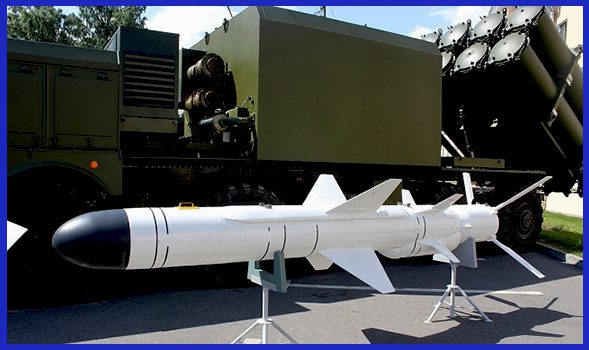
Important Announcement for Our Valued Readers!
After an article is published, it is possible that updates or changes may have occurred beyond the time of publication. Therefore, it is important to be aware that certain information in the article might be outdated. To ensure the most accurate analysis, it is highly recommended to verify the content with the latest sources available.
However, we are dedicated to delivering outstanding articles on military products and global updates. Maintaining quality and smooth operation requires resources. Your support sustains our efforts in providing insightful content. By purchasing high-quality products through our affiliated links, you help us keep our platform alive and acquire top-notch items. Your unwavering support is invaluable and inspires us to strive further.
We welcome your suggestions and requests for more information, as we value feedback from our readers. If there’s specific defence material or equipment not covered on our site, please share your request in the comments. We’ll strive to research and provide the required information. We sincerely thank you for your unwavering interest in our website, and we eagerly anticipate hearing from you! Enjoy your reading experience!
